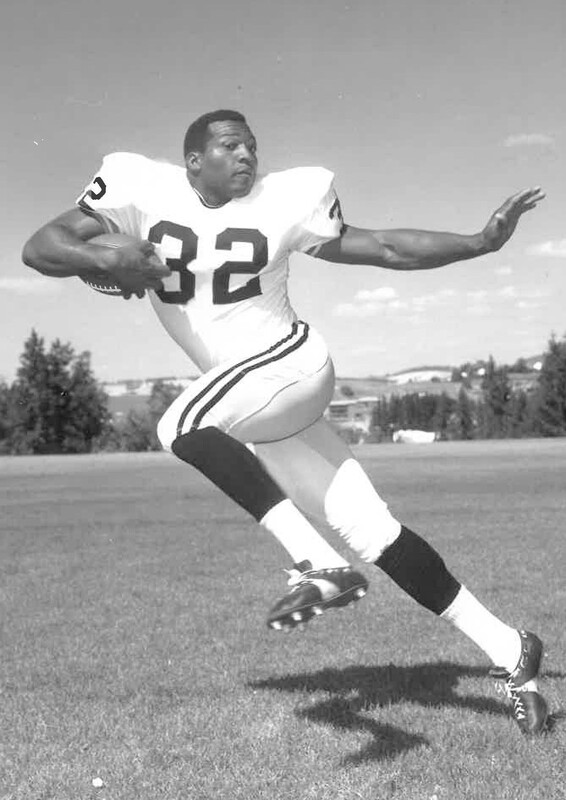Black Student Athletics: Ray “Thunder Ray” McDonald
Ray “Thunder Ray’’ McDonald was one of the greatest football players to play for the Vandals football team during the 1965 and 1966 seasons, as well as an exceptional competitor in the Vandals Track and Field team. Originally from the McKinley suburb in Texas, one of the largest segregated Black/African-American suburbs in Texas at the time, he had moved to Caldwell, Idaho, during his junior year of high school. While attending Caldwell High School, he became a three-sport star in football, basketball, and track and field while also being the only Black athlete on the school’s sports teams.1 While there, he also found a passion for music and piano, even participating in the high school choir.
McDonald enrolled at the University of Idaho in 1963, starting on the freshman football team and having a successful football year. His sophomore year was as successful as his freshman year, even though he suffered an Achilles tendon tear and missed his first three games (an injury he would deal with for the rest of his professional football career).
He rose to fame during the 1965 and 1966 football years, where he was named an All-American and set several records at the University of Idaho that still stand to this day. McDonald holds the most rushing yards per game at the University of Idaho, sitting at 132.9 yards per game, and lies fourth in the state of Idaho when it comes to most yards in one game (255 yards).2
While he was at the University of Idaho, it seems that the town of Moscow and the University of Idaho was quite accepting of McDonald according to some of his teammates.3 He was eventually drafted 13th overall by the Washington Redskins in the 1967 NFL draft, though his professional career was not as notable as his collegiate career had been. During his 1967 to 1969 professional football career, he saw little play with the Redskins as his injury caught up with him and he was publicly outed as being gay.
All-in-all, McDonald’s professional football career was over, and he instead moved to Washington D.C. where he finished his studies in music and taught at the Patricia Roberts Harris Educational Center.4 Inducted into the University of Idaho Hall of Fame, his legacy at the University has certainly inspired many other Black student-athletes to rise to the occasion. These Black student-athletes were not only great athletes, but also role models for Black students looking to have collegiate careers in Northern Idaho; their success also benefitted the University of Idaho, which saw significant importance in recruiting outside of the local pool.
Notes
- Gasper Brody, “Ray “Thunder Ray” McDonald,” Black History at the University of Idaho, 2022, https://www.lib.uidaho.edu/blackhistory/features/mcdonald.html. ↩
- Gasper Brody, “Ray “Thunder Ray” McDonald.” ↩
- Klemko Robert, “What Happened to Washington’s Ray McDonald?,” Sports Illustrated, 2007, https://www.si.com/nfl/2017/06/23/ray-mcdonald-gay-washington-redskins-1967-nfl-draft. ↩
- Klemko Robert, “What Happened to Washington’s Ray McDonald?” ↩


